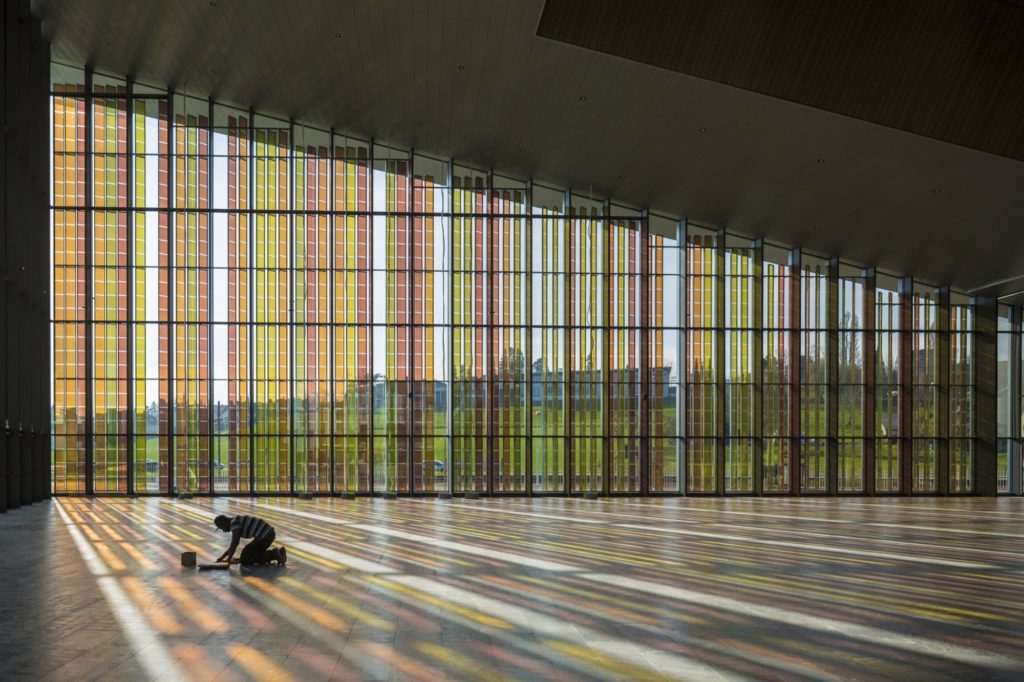Coloured Photovoltaic Tech: the Grätzel’s Cells

archdaily.com
In 2009, the Romande Energie SA, one of the major Swiss energy’s distributor, decided to invest in the construction of a PV park in the École Polytechnique Fédérale of Losanna (EPFL). The photovoltaic plant, installed over the roofs of the buildings, was opened in 2015: its area is about 15500 m2 and the total installed power is of 2,1 megawatt.
There are a lot of different photovoltaic technologies employed into the campus: there are flexible panels; panel which can be directed in the direction of solar rays; vertical panels or panels set on the external walls. However, the most spectacular application of PV technology can be found in the convention room.
The west side of the SwissTech Convention Center is a 300 m2 wall: it is apparently made of coloured and transparent glasses and the external light creates beautiful visual effects on the floor of the room. Indeed, the true aim of these glasses isn’t to be a work of art but to produce energy! This wall is composed of 1400 modules of 35 x 50 cm: this modules are known as Grätzel’s cells. The EPFL Convention Center represents the first large scale installation of this technology, designed by Michael Grätzel, an EPFL teacher, in 1991 and produced by an EPFL spin-off, the Solaronix. The energy’s production is about 2000 kWh per year.
Grätzel’s cells’ technology is based on the idea of reproducing photosynthesis, the chemical process which happens into vegetables cells. These cells are also called DSSC or “dye-sensitized solar cell”: they are particular photo-electrochemical cells.

One cell is formed by a porous layer of titanium dioxide (TiO) between two glass’ conductors and an electrolyte solvent. The glasses are employed as photo-anode and photo-catode; the TiO is a semiconductor and it is immersed in a mixture of a photosensitive organic dye and the solvent. The dye is used in order to absorb and transfer photons to the semiconductor: this process creates a electron-hole pair, just as it happens in semiconductor devices. The electrolyte solvent is necessary in order to make this process continuous: the result is the circulation of an electrical current.
The cells can be obtained using different organic dyes: this feature leads to a different colour of the cell. One of the most used dye is anthocyanins, extracted by raspberries and blackberries.
Grätzel’s cells represent a valid alternative among others photovoltaic s existing technologies: moreover, the organic materials employed avoid problems linked to panels’ disposal.

These cells were also adopted in the Milan’s Expo pavilion of Austria: one wall of 90 m of the building was covered by Grätzel’s cells, which produced about 24 kWh per day.
Solar energy can be employed as a renewable source using natural and organic materials and also trying to imitate natural processes, so that the pollution created in every step of panels’ construction is reduced. Moreover, Grätzel’s cells creates fabulous lights’ shows: in this case, we can’t talk about environmental impact!
